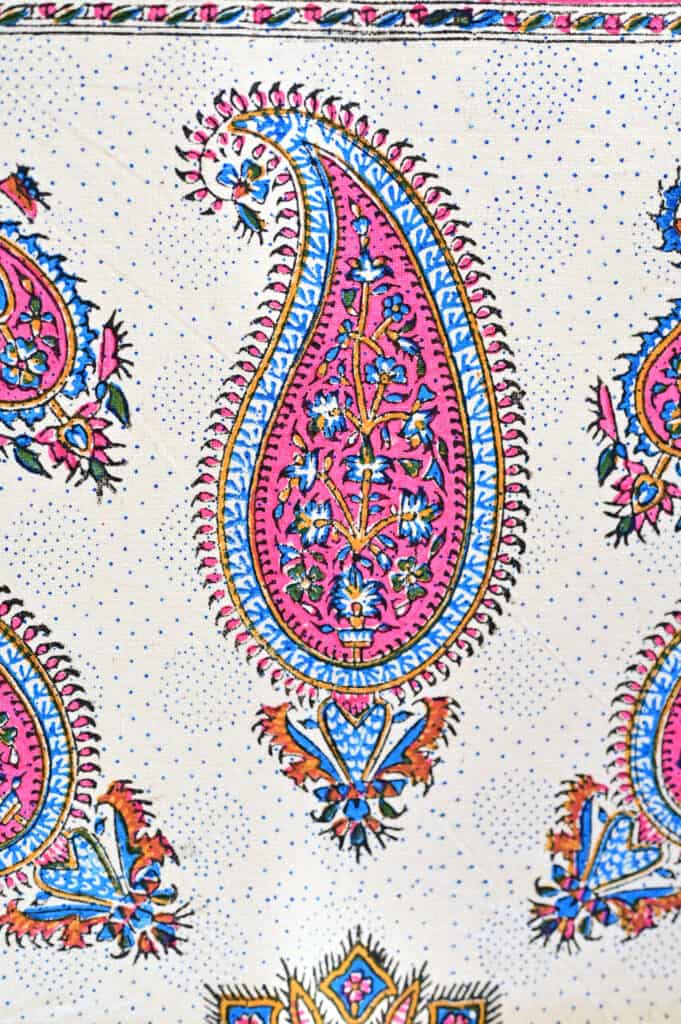
Paisley Pattern’s Popularity
Paisley is a decorative pattern characterized by intricate, swirling designs featuring curved shapes resembling a teardrop or half of the yin-yang symbol. The pattern originated in Persia (modern-day Iran) and has been popularized in various cultures around the world.
The paisley pattern typically consists of a vibrant, multicoloured design with a combination of floral, leaf, and abstract motifs. It is commonly used in textiles, such as fabrics for clothing, scarves, and home furnishings. Paisley has also been incorporated into other mediums, including ceramics, jewellery, and even tattoos.
The term “paisley” originated from the town of Paisley in Scotland, which became a major centre for textile production during the 19th century. The town’s weavers were renowned for creating shawls with intricate paisley designs. As the popularity of paisley spread, it became synonymous with the pattern itself.
Paisley experienced a resurgence in popularity during the 1960s and 1970s as part of the psychedelic and bohemian fashion trends. The pattern became closely associated with the counterculture movement and was commonly seen on clothing, album covers, and artwork during that era.
Today, paisley remains a popular design choice in fashion and interior design. It is often used to add a touch of elegance, vibrancy, or exoticism to various products. The paisley pattern continues to evolve and adapt to modern styles, with contemporary variations and interpretations being created by designers and artists worldwide.


